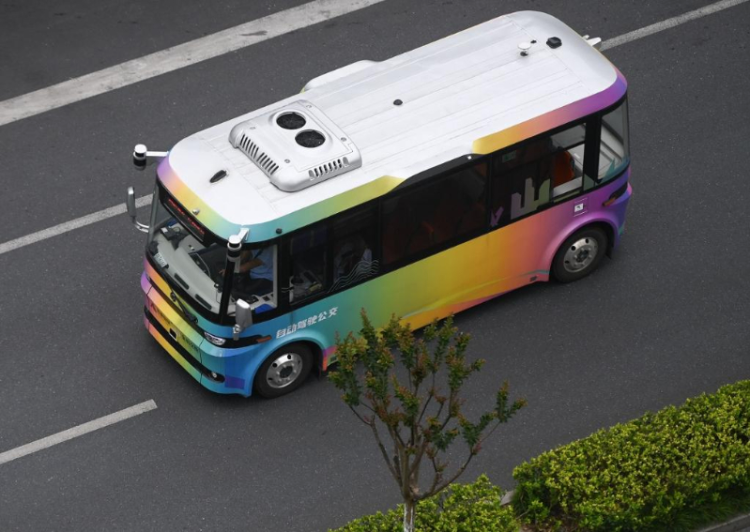Introduction: The Promise of Autonomous Driving
Autonomous driving, once a concept relegated to science fiction, is now a rapidly developing reality. Self-driving cars have the potential to revolutionize the way we travel, offering safer roads, reduced traffic congestion, and greater accessibility for those unable to drive. However, despite significant advances in technology, the question remains: is autonomous driving technology truly ready to handle the unpredictable and often chaotic conditions of real-world driving?
This article examines the current state of autonomous driving technology, the challenges it faces in real-world scenarios, and the key developments needed before fully autonomous vehicles can safely navigate our roads.
1. The Levels of Autonomy: Understanding the Spectrum
Before diving into the challenges autonomous vehicles (AVs) face on the road, it’s essential to understand the levels of autonomy, as defined by the Society of Automotive Engineers (SAE). There are six levels of autonomy, ranging from Level 0 (no automation) to Level 5 (full automation).
- Level 0: No automation – the driver is entirely responsible for controlling the vehicle.
- Level 1: Driver assistance – features such as cruise control or lane-keeping assist, but the driver is still responsible.
- Level 2: Partial automation – the vehicle can control some driving tasks, such as steering and speed, but the driver must remain engaged.
- Level 3: Conditional automation – the vehicle can handle most driving tasks, but the driver must be ready to intervene if necessary.
- Level 4: High automation – the vehicle can operate autonomously in certain conditions (e.g., within specific geographical areas or under specific weather conditions) without human intervention.
- Level 5: Full automation – the vehicle can operate autonomously under all conditions, without human involvement.
Currently, most AVs on the road are at Level 2 or Level 3, with several companies such as Waymo, Tesla, and Cruise working toward achieving Level 4 and eventually Level 5 autonomy. But the key question remains: are these technologies prepared for the complex, dynamic nature of real-world driving?
2. Challenges Autonomous Vehicles Face in the Real World
While autonomous vehicles have demonstrated success in controlled environments and on highways, they still face several major challenges when navigating real-world urban roads, which are unpredictable, congested, and full of varied scenarios.
a. Complex Traffic Scenarios
Autonomous vehicles must be capable of interpreting and responding to complex traffic situations, such as:
- Unpredictable human behavior: Pedestrians crossing the street unexpectedly, cyclists weaving in and out of traffic, and drivers who make erratic decisions are difficult for AI to predict and react to appropriately.
- Merging and lane changes: Navigating busy intersections, merging into traffic, or responding to cut-off drivers requires judgment, reflexes, and the ability to anticipate movements of other road users.
- Traffic signals and signs: While AVs are trained to recognize and respond to traffic signals, real-world scenarios often present challenges such as malfunctioning lights, obscure signage, or ambiguous intersections.
To handle these situations, autonomous vehicles rely on a combination of sensors (such as LiDAR, radar, and cameras), machine learning, and real-time data processing. However, current systems are still refining their ability to make the best judgment in complex, high-pressure scenarios.
b. Weather and Environmental Factors
Adverse weather conditions such as rain, snow, fog, and ice present significant challenges for autonomous driving. These environmental factors can reduce the effectiveness of sensors, like cameras and LiDAR, which rely on clear visibility to function correctly.
- Poor visibility: In heavy rain or snow, sensors may be obstructed, making it difficult for the vehicle to detect pedestrians, cyclists, or other vehicles.
- Road surface issues: Ice or potholes on the road can create hazards that are difficult for autonomous systems to navigate safely.
- Light conditions: Night driving or bright sunlight can cause glare, making it harder for cameras to detect road signs, lane markings, and obstacles.
While advancements are being made to improve the resilience of autonomous driving systems to adverse weather, this remains a significant challenge that requires further research and innovation.
c. Ethical and Legal Challenges
Autonomous vehicles will also face complex ethical and legal issues that human drivers rarely have to consider. For example, what should an AV do in the case of an unavoidable accident? Should the vehicle prioritize the safety of its occupants, pedestrians, or other road users?
- Moral decision-making: Self-driving cars must be programmed to make decisions that are consistent with societal values and ethics. In a split-second situation, the vehicle may have to make life-or-death decisions, which raises moral and philosophical dilemmas that have yet to be fully resolved.
- Liability and responsibility: In the case of an accident involving an autonomous vehicle, determining who is at fault can be complicated. Is it the manufacturer, the software developer, or the vehicle owner? The legal frameworks surrounding AVs are still evolving and will need to adapt to the new reality of self-driving cars.
d. Public Perception and Trust
One of the most significant hurdles for autonomous vehicles is public acceptance. Despite the technology’s potential to improve road safety and reduce traffic, many people remain skeptical about the safety and reliability of AVs. High-profile accidents involving autonomous vehicles, such as the Uber self-driving car fatality in 2018, have raised concerns about the safety of these technologies.
Building trust will require:
- Transparency: Companies must be transparent about the capabilities and limitations of their self-driving systems.
- Extensive testing: More real-world testing and data collection are needed to demonstrate that AVs can operate safely and reliably in various conditions.
- Collaboration with regulators: Governments and industry leaders must collaborate to establish safety standards, certification processes, and testing procedures to ensure that AVs are ready for widespread deployment.

3. Advancements in Autonomous Driving Technology
Despite the challenges, autonomous driving technology is advancing rapidly. Major players in the industry are constantly improving their systems to address the issues outlined above.
- Waymo, a subsidiary of Alphabet (Google’s parent company), has been a leader in the development of autonomous driving. It has completed millions of miles of testing on public roads and launched a fully autonomous ride-hailing service in certain parts of Phoenix, Arizona. Waymo’s vehicles have a significant advantage in terms of data and real-world experience.
- Tesla has been at the forefront of semi-autonomous driving with its Autopilot system. Although Tesla’s Autopilot is not fully autonomous, it provides features like lane-keeping, adaptive cruise control, and automatic parking. Tesla’s ability to collect real-world data from its vast fleet of vehicles provides valuable insights for improving autonomous driving capabilities.
- Cruise, owned by General Motors, is focusing on autonomous driving in urban environments, particularly for ride-hailing. In 2021, Cruise began testing its self-driving Chevrolet Bolt EV in San Francisco, with plans to expand to other cities.
The progress being made by these companies, alongside others like Aurora, Aptiv, and Zoox, demonstrates that autonomous driving is moving forward at a rapid pace. However, there is still a need for continuous improvement, particularly in adapting to complex urban environments and adverse weather conditions.
4. What Needs to Happen for Full Autonomy?
To make autonomous vehicles truly ready for real-world roads, several key developments are required:
- Improved sensor technology: To handle a wider range of weather conditions and scenarios, autonomous vehicles need to use more advanced sensors, such as thermal cameras, radar, and improved LiDAR systems.
- Better machine learning algorithms: AI and machine learning models need to be trained on an even more diverse set of real-world driving conditions, including rare edge cases that may not be present in typical test scenarios.
- Regulatory frameworks: Governments must establish comprehensive guidelines for the testing, certification, and deployment of autonomous vehicles to ensure safety and public confidence.
- Public education and trust-building: As technology advances, educating the public about the safety benefits and potential of autonomous driving will be crucial in overcoming skepticism.
5. Conclusion: Are We Ready?
Autonomous driving technology is advancing rapidly, but it is not yet fully prepared to handle the unpredictable challenges of real-world driving. While we are seeing significant progress in controlled environments and specific use cases, such as highway driving and urban ride-hailing, the complexity of real-world scenarios—particularly in terms of human interaction, environmental factors, and legal issues—remains a significant hurdle.
However, as technology continues to improve and more real-world data is gathered, the promise of fully autonomous vehicles is closer than ever. It will take continued innovation, rigorous testing, and public acceptance to fully unlock the potential of self-driving cars, but the road ahead is filled with possibilities for safer, more efficient transportation.


































Discussion about this post